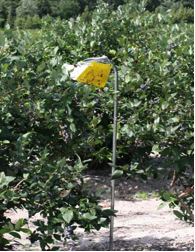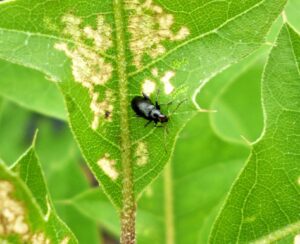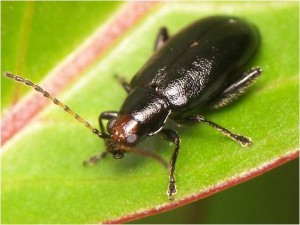Rob Pyne1, Kathryn Homa 1,2, Bill Barney1,2, Andy Wyenandt1, and Jim Simon1
1 Department of Plant Biology and Pathology, Rutgers University 2 IR-4 Program
In 2010 a basil variety and breeding line trial was conducted as an initial screen for potential sources of genetic resistance to downy mildew caused by Peronospora belbahrii, a destructive pathogen of basil introduced in the US in 2009. This trial was expanded from 30 to over 40 varieties representing six different Ocimum species in 2011. Varying levels of disease susceptibility were observed with the highest tolerance associated with O. americanum, O. citriodorum, O. gratissimum, and O. tenuiflorum varieties and USDA-GRIN accessions. In contrast, the most severe symptoms and extensive sporulation were consistently observed in O. basilicum accessions, including the popular commercial sweet basil varieties. [Read more…]




